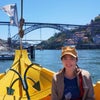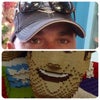The Grote Kerk or St.-Bavokerk is a Protestant church and former Catholic cathedral located on the central market square in the Dutch city of Haarlem. Another Haarlem church called the Cathedral of Saint Bavo now serves as the main cathedral for the Catholic Diocese of Haarlem.
. On the left the statue of Laurens Janszoon Coster can be seen, on the right is the Vleeshal.]]
The Grote Kerk or St.-Bavokerk is a Protestant church and former Catholic cathedral located on the central market square in the Dutch city of Haarlem. Another Haarlem church called the Cathedral of Saint Bavo now serves as the main cathedral for the Catholic Diocese of Haarlem.
saves Haarlem from the Kennemers. Dated 1673 but showing legend from 1274. Now in the collection of the Catholic Cathedral of Saint Bavo, also in Haarlem.]] This church is an important landmark for the city of Haarlem and has dominated the city skyline for centuries. It is built in the Gothic style of architecture, and it became the main church of Haarlem after renovations in the 15th century made it significantly larger than the Janskerk (Haarlem). The term "Catholic" was never really associated with this church, since it was only consecrated as a cathedral in 1559, which was already in the middle of the period known as the Protestant Reformation. The church was confiscated only 19 years later during the Haarlemse noon in 1578, when it was converted to Protestantism. It was dedicated to Saint Bavo at some time before 1500, though there exists a curious painting in the collection of the Catholic Cathedral of St. Bavo illustrating the miracle of St. Bavo saving Haarlem from the Kennemers in a scene from the 13th century. This painting was painted a century after the Catholics were banned from "their" church, and may have been a commemorative painting referring to the defense of the Church and the Catholic faith as well as the defense of the city.
Haarlem has had a Christian parish church since the 9th century. This first church was a "daughter church" of Velsen, which itself was founded in 695 by St. Willibrord. This early first church was a wooden church on the same site of the current Sint-Bavokerk. Extensions and expansions over the centuries led to its formal consecration in 1559 when the first bishop Nicolaas van Nieuwland was appointed. Only 19 years later, after the Spanish occupation ended (they won the Siege of Haarlem) and Haarlem reverted to the Protestant House of Orange, the church was confiscated during the episode known as the Haarlemse noon and converted to Protestantism as part of the Protestant Reformation.
At this time most of the art and silver artefacts were also seized and what was not sold or destroyed has survived in the Haarlem municipal collection, which is now in the collection of the Frans Hals Museum. The Haarlem catholics took what they could carry with them and went underground, meeting thereafter in various schuilkerken, the most prominent ones known as the St. Franciscus statie and the St. Josephs statie. Eventually, the St. Josephstatie built a new church across from the Janskerk called the St. Josephkerk, and this church, after growing and becoming a cathedral again, built a new cathedral on the Leidsevaart in the 19th century. Since the building of this new Cathedral of St. Bavo, there has been lots of confusion about the name of the Bavochurch, since as a Protestant church it is not even dedicated to Saint Bavo. For this reason it is officially called Grote Kerk, which just means "High Church".
, 1673 (National Gallery, London)]]
The interior of the church has been painted many times by local painters, most notably by Pieter Jansz Saenredam. Until 1831 graves were allowed in the church, and many illustrious Haarlemmers through the centuries are buried there. Often people were buried under family gravestones, and the family shields of illustrious families are mounted on diamond shaped "plaques" hanging on the walls, or they are cut in glass on stained glass window decorations, such as the Tetrode (family). Other illustrious Haarlemmers were buried in individual graves such as the rich Pieter Teyler van der Hulst and Willem van Heythuisen, but also the painters Maarten van Heemskerck, Frans Hals, Saenredam himself, Jacob van Ruysdael and Salomon van Ruysdael, and the giant Daniel Cajanus with his midget friend Jan Paap. The last burial there was for Willem Bilderdijk. A local story is that there is a grave of a child who used to hit his mother. After a time his hand started growing above his grave, and a copper plate had to be installed on the grave to stop the hand from growing.
Legend has is that the two upper bells in the tower are taken from Damiette (Damiate in Dutch) during the Fifth Crusade by Haarlem knights and that since 1561 the two bells are rung every evening between 21:00 and 21:30 o'clock, to commemorate the conquest of Damiette on August 25, 1219. In reality, they were a gift by Johannes Dircks, a bell-maker from Aalst to Nicolaas van Nieuwland, the bishop of Haarlem.
In any case, the ringing of the bells indicated the closing of the city gates. Two new upper bells were placed in 1732, created by Jan Albert de Grave.
In 1932 the clock on the tower was upgraded with electrical lights.
On May 22, 1801 there was a fire caused when lightning struck the tower. A disaster was prevented by Martijn Hendrik Kretschman, the guard of the tower, and three other men. In 1839, one of those men, Jan Drost, committed suicide in the tower after he was fired (he worked for the church). He had tried to set fire to the organ by throwing hot coals on top of it, but he missed and another disaster was prevented.
In the renovation of the 1930s an automatic sprinkler system was installed in the tower, that could extinguish a fire up to an elevation in the tower of 70 meters.
at Sint-Bavokerk. Mozart once played this organ.]] The organ of the Sint-Bavo church (the Christiaan Müller organ) is one of the world's great organs. It was built by Christian Müller and Jan van Logteren, from Amsterdam, between 1735 and 1738; upon completion it was the largest organ in the world with 60 voices and 32-feet pedal-towers. In Moby-Dick (1851), Herman Melville describes the inside of a whale's mouth:
"Seeing all these colonnades of bone so methodically ranged about, would you not think you were inside of the great Haarlem organ, and gazing upon its thousand pipes?"Many famous people used this organ, including Mendelssohn, Händel and the 10-year old Mozart who played it in 1766.
The organ was modified a number of times in the 19th and 20th century. These changes were undone in the renovation between 1959 and 1961. Between 1987 and 2000 work was performed on the voicing of the organ. A local story goes to say that the bass of the organ was so low, the mortar in between the brimstones started to brittle to nothing.





